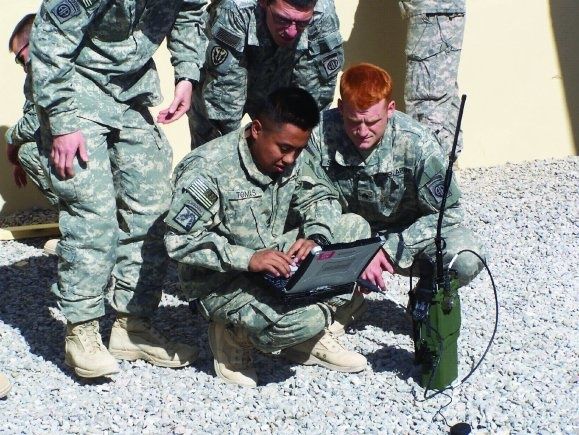16.09.2015 Thales Group
Thales annonce le lancement de SquadNet, sa nouvelle radio pour soldat, à l’occasion du salon DSEI 2015. Avec SquadNet, Thales vient compléter sa gamme de radios pour soldat, incluant notamment le Starmille, qui offre des fonctionnalités étendues telles que voix données et vidéo simultanées. La nouvelle radio SquadNet combine une forme d’onde de mise en réseau unique, un GPS intégré, une connexion Bluetooth, des capacités de cryptage programmable, et garantit, à un coût optimisé, des communications sécurisées dans un format à la fois compact, léger et économe en énergie.
Avec sa batterie amovible et rechargeable, d’une autonomie de 28 heures, Squadnet étend la durée des missions et réduit les besoins en batteries de rechange. Non seulement cela permet au soldat, moins chargé, de transporter davantage de vivres et de munitions, mais également de réaliser des économies d’approvisionnement en batteries et donc de réduire le coût de possession. La batterie étant rechargeable depuis presque toutes les sources d’alimentation USB, le choix du mode de charge est étendu, des panneaux solaires à la simple prise allume-cigare.
Grâce à sa forme d’onde exclusive, SquadNet peut fonctionner dans des zones où d’autres types de radios auraient du mal à le faire, comme par exemple les environnements urbains, les bois ou les terrains accidentés. Alors que la plupart des radios pour soldat offrent des liaisons point à point, Squadnet, grâce à son mode de relayage automatique, garantit une portée étendue et une parfaite résilience en termes de couverture. Dès lors qu’une autre radio SquadNet se trouve à portée, il est possible d’échanger des communications voix et des données de positionnement depuis toutes les autres radios du réseau.
Le GPS intégré affiche des données de positionnement sur l’écran de la radio. Couplées avec un dispositif Android, les données GPS apportent une excellente connaissance de la situation, affichant sur une carte ou une photographie aérienne la position et les déplacements récents de l’utilisateur et des autres soldats appartenant au même réseau.
L’application SquadNet offre également une fonctionnalité de type web-bridge (pont) qui permet d’établir une liaison, via des réseaux IP (3G, LTE ou Wi-Fi), avec des groupes de combat géographiquement distants. Cette capacité de liaison avec le soutien extérieur (reach back), permet une coordination à distance des groupes de combat et d’étendre la portée des opérations.
Légère et dotée d’un boîtier compact et robuste, la radio SquadNet est à la fois discrète et résiliente, quelque soit l’environnement d’utilisation. Son interface, simple et facile à utiliser, repose sur un matériel puissant et fonctionnel, toutes les informations et fonctions clés étant accessibles en un clin d’œil. Le soldat peut ainsi se concentrer pleinement sur sa mission, plutôt que sur ses outils. Avec sa conception axée sur l’utilisateur, la radio SquadNet est utilisable par tous, réduisant les besoins en formation et facilitant son déploiement opérationnel.
Sur un marché très compétitif, la radio SquadNet constitue, tant par ses capacités que par son prix, une solution très performante pour une grande diversité de clients, qu’il s’agisse d’un premier achat ou du remplacement d’une capacité existante.













